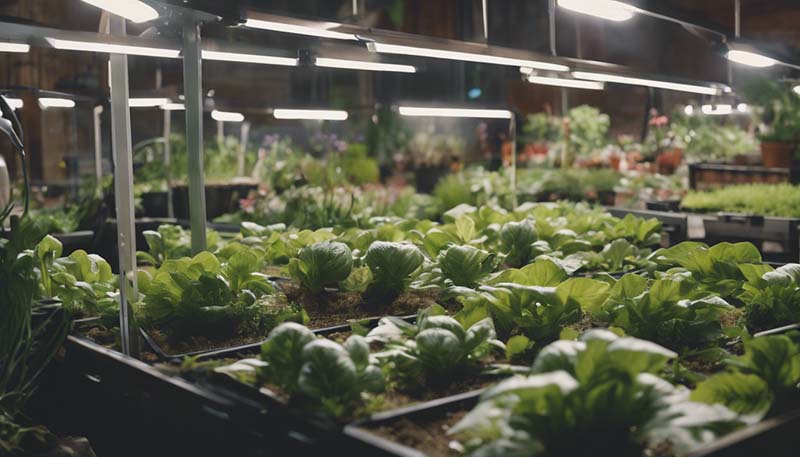1. Briefly introduce the concept of indoor gardening.
2. Explain the significance of local food systems.
3. State the purpose of the essay: to explore how indoor gardening can benefit local food systems.
**The Current State of Local Food Systems**
1. Discuss the importance of local food systems.
2. Identify challenges faced by local food systems (e.g., climate change, urbanization, soil degradation).
3. Highlight the need for innovative solutions to support local food systems.
**The Role of Indoor Gardening**
1. Define indoor gardening and its various forms (e.g., hydroponics, aeroponics, vertical farming).
2. Explain how indoor gardening can address some of the challenges faced by local food systems.
Advertisement
**Benefits of Indoor Gardening for Local Food Systems**
1. **Year-Round Production**
- Discuss how indoor gardens can produce food regardless of the season or weather conditions.
2. **Control Over the Growing Environment**
- Detail how controlling light, temperature, and humidity can lead to higher crop yields and better quality produce.
3. **Reduced Water Usage**
- Compare water usage in indoor gardens to traditional agriculture and explain how efficient irrigation systems can conserve water.
4. **Lower Risk of Pests and Diseases**
- Explain how indoor gardens can minimize the use of pesticides and reduce the risk of crop loss due to diseases.
5. **Space Efficiency**
- Discuss how indoor gardens, especially vertical farming, can produce a large amount of food in a small area, ideal for urban environments.
6. **Sustainable and Eco-Friendly Practices**
- Elaborate on how indoor gardening can incorporate renewable energy sources and reduce carbon footprints.
7. **Support for Biodiversity**
- Describe how indoor gardens can grow a diverse range of crops, supporting biodiversity.
8. **Economic Benefits**
- Discuss how indoor gardening can create local jobs and stimulate the economy.
9. **Educational Opportunities**
- Explain how indoor gardens can serve as educational tools for community members, especially children.

10. **Community Engagement**
- Highlight how indoor gardens can foster a sense of community and encourage local involvement in food production.
**Challenges and Solutions**
1. **Initial Setup Costs**
- Discuss the financial barriers to starting an indoor garden and suggest solutions like community funding or government incentives.
2. **Technical Knowledge**
- Address the need for specialized knowledge and propose solutions like workshops, online courses, and mentorship programs.
3. **Scaling Up**
- Explore the challenges of scaling indoor gardening operations and discuss potential strategies for expansion.
**Case Studies**
1. Present one or two real-world examples of successful indoor gardening projects that have positively impacted local food systems.
**Conclusion**
1. Summarize the key benefits of indoor gardening for local food systems.
2. Emphasize the potential of indoor gardening to transform food production and make it more sustainable.
3. Call to action for policymakers, community leaders, and individuals to support and engage in indoor gardening initiatives.
**References**
- List all the sources you've used for your research, following a consistent citation style.
Comment